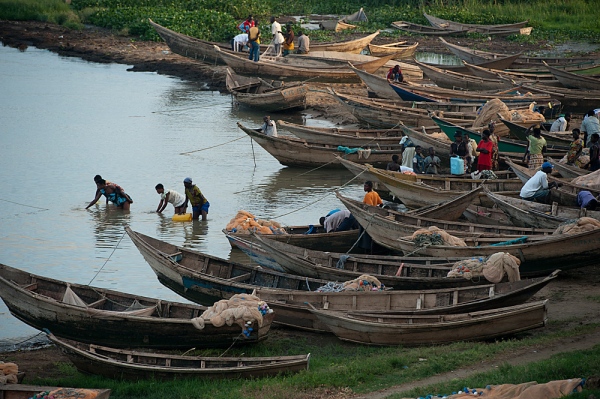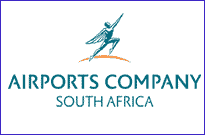Uganda: Uganda Transportation Profile
2015/01/28

The transport sector is one of the most crucial sectors in the country as other sectors depend on it either directly or indirectly. The sector has continued to attract over 1,651 billion total national budgets since FY 2012/2013. However, the capacity of sector to effectively utilize the huge investment is still lacking resulting in the continued depreciation of the country’s transport infrastructure.
Uganda is served by road, rail, inland water and air transport and the majority of people in Uganda travel by foot and road public transport. The countries railway system has not yet been rehabilitated and improved despite its privatization.
The transport sector is one of the most crucial sectors in the country as other sectors depend on it either directly or indirectly for tranpsort. The sector has continued to attract over UGX 3 billion from the national budgets since FY 2010/2011. However, the sector has not developed the capacity to effectively utilize the huge investment from both government and the development partners. This has resulted in the unutilized funds being returned to the treasury.The delay in the maintainance and improvement of the transport network has in a way resulted in the continued depreciation of the country’s transport infrastructure.
Characteristics of the Sector
The sector has been deregulated for some time
The sector is affected by high fuel prices
The transport vehicles are owned by small scale operators with majority owning one vehicle each.
The country is fairly adequately connected to its neighbours as well as the COMESA member states by air , rail and road
The sector has over 90,000 motorcycles on Road
The sector is affected by high fuel prices
The transport vehicles are owned by small scale operators with majority owning one vehicle each.
The country is fairly adequately connected to its neighbours as well as the COMESA member states by air , rail and road
The sector has over 90,000 motorcycles on Road
Inadequate infrastructure due to lack of investment , particularly in electric power and roads, is a major constraint to further increase. The government has designated infrastructure development as a leading priority, with investments in roads and in the completion of hydroelectric power plants. To improve management of road construction projects, the government continued to allocate a large chunk of its budget to the Uganda National Roads Authority, totalling additional than USD 700 million in 2009. The government is providing about 70% of the funding, with the remainder coming from donors, inclunding the EU, the AfDB and the World Bank. Some of these resources were not utilised, however, due to absorption capacity constraints.
The government is as well developing a master plan for the expansion of the national rail network, inclunding links between northern Uganda and southern Sudan and between western Uganda and the eastern Congo. A new Lake Victoria ferry to serve the southern route to Tanzania was purchased to replace the MV Kabalega, which sank in 2004. There are as well several EAC regional initiatives to develop road and rail links, inclunding plans for a Uganda-Kenya railway project.
Roadways
The Lagos-Mombasa Highway, part of the Trans-African Highway network and aiming to link East Africa and West Africa, passes through Uganda. This is complete only eastwards from the Uganda–DR Congo border to Mombasa, linking the African Great Lakes region to the sea. It is commonly called the 'Trans-Africa Highway' in Uganda.
It cannot be used to reach West Africa because the route westwards across DR Congo to Bangui in the Central African Republic (CAR) is impassable after the Second Congo War and requires reconstruction. An alternative route (not part of the Trans-African network) to Bangui based on gravel roads and earth roads runs from Gulu in northern Uganda via Nimule and Juba, South Sudan and Obo in south-east CAR. This is used by trucks but sections are impassable after rain.
The route has been closed at times during war and conflict in northern Uganda (the Lord's Resistance Army rebellion) and South Sudan, but up to July 2007 had not been affected by the Darfur conflict and was the only usable road between East and West Africa. The security situation should be checked with authorities in northern Uganda, South Sudan and south-eastern CAR before use.
Waterways
Lake Victoria is the principal waterway with commercial traffic. In conjunction with train services, the railway companies of Uganda and Tanzania operate train ferries on the lake between railhead ports of the two countries and Kenya. These ferries load rail coaches and wagons. The safety record has been poor in recent years. Jinja and Port Bell (on a 7 km branch line from Kampala) are the railheads for Uganda, connecting to Mwanza, Tanzania and Kisumu, Kenya.
The Port Bell ferry wharf is visible on high-resolution Google Earth photos at latitude 0.2885° longitude 32.653°. A ferry is shown loading truck and rail coaches while another waits.
Other ferries serve non-railhead ports on the lake.
Lake Kyoga and the Victoria Nile south of the lake constitute the second most important commercial waterway. There used to be a steamboat service between Namasagali, a railhead port on the Nile, going as far as Masindi-Port on the other side of Lake Kyoga.
Other waterways such as Lake Albert, Lake George, Lake Edward, and the Albert Nile do not carry commercial traffic to any great extent.
Railway links with adjacent countries, as of 9 July 2011 references to southern Sudan reflect the new nation of South Sudan
- Kenya Kenya - yes - same gauge 1,000 mm (3 ft 3 3⁄8 in)
- South Sudan Transport in South Sudan - proposed - break of gauge 1,000 mm (3 ft 3 3⁄8 in)/1,067 mm (3 ft 6 in)
- Democratic Republic of the Congo Democratic Republic of Congo - no - break of gauge 1,000 mm (3 ft 3 3⁄8 in)/1,067 mm (3 ft 6 in)
- Rwanda Rwanda - no railways yet
- Tanzania Tanzania - no direct connection except via train ferry - same gauge 1,000 mm (3 ft 3 3⁄8 in)
Airports - with unpaved runways Total:
30
Transportation - note:
- Uganda News
-
- BOTSWANA: Africa: USA-Africa - No Policy? Bad Policy? or Both?
- BOTSWANA: Africa: U.S. State Department To Get Experienced Diplomat in Key Africa Post
- UGANDA: Ugandan Govt Starts Verifying International Academy Teachers
- BOTSWANA: Africa’s economic growth in 2016 was driven by East Africa
- BOTSWANA: Africa property offers rich pickings for the brave
- BOTSWANA: Bill Gates sees US likely to maintain aid levels for Africa
- Trending Articles
-
- UNITED STATES: U.S. warns South Sudan: Continued chaos is not acceptable, aid may be pulled
- CHINA: Xiamen BRICS Summit in China: Xi looks to send message, PM Modi mentions peace
- KENYA: Election rerun in Kenya raises fears about violence and economic troubles
- SYRIA: Ramadan TV dramas get inspiration from Syria war
- TURKEY: Turkey relocates medieval tomb over flooding risk
- ISRAEL: Israelis leave tech jobs behind for healthy life offline








